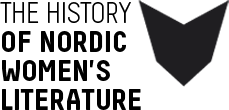In their everyday stories, essays, and novels, the female Romantic prose writers had to express themselves in relation to a male Romantic rhetoric that, in the work of a number of male theologians, served to provide the myth of innocence with substance and sociality in the bourgeois home. Female worthiness becomes a central issue for many female writers of the day.
Tag: Poetry
In the history of Swedish literature, Hedvig Charlotta Nordenflycht is usually credited with introducing subjective poetry. She was the first writer in Swedish literature to view her writing as a vocation, an assignment, a cultural calling in itself. This is in turn linked to her status as one of the first Swedish cultural personages to live by her pen. As Levertin writes of Mrs Nordenflycht: “She is the first modern individual in Swedish literature.”Throughout her writing career, Mrs Nordenflycht pleaded for an improvement in women’s status. She spent much time and energy refuting the contention of women’s weakness, demonstrating that the woman is just as mentally capable as the man, and arguing that she, like him, should be permitted to use her abilities and mental powers.
Charlotta Dorothea Biehl was the most productive Danish woman writer of the eighteenth century. She repeatedly made effective use of the letter in her writing. Not least in a year-long and extensive correspondence with her close friend Lord Chamberlain Johan Bülow. At his request Biehl wrote Mit ubetydelige Levnets Løb (My Insignificant Life) in the form of a large-scale letter, intended to be distributed and read among Bülow’s circle of friends and influential persons of rank.Her private letters would not have been written with the intention of circulation, but surely Biehl had hoped that Johan Bülow would keep the private letters for the benefit of posterity. If so, she was not mistaken. To this very day they are kept among Johan Bülow’s papers, carefully preserved for anyone who would like to make the acquaintance of “the spinster scribe”.
Professor J. S. Sneedorff highlighted the Danish translation of German author Margaretha Klopstock’s Briefe von Verstorbenen an Lebendige (Letters from the Dead to the Living) as an example of the modern national language he wished to promote.One reason for the eighteenth-century’s growing interest in women writers, and particularly letter-writers whether new or old, well-known or less well-known, was that women wrote in the national language and could thus be used as illustrations of practical usage in the occasionally highly abstract debate about what the national language ought to be. Moreover, women were not rigorously schooled in the Latin tradition of scholarship – the confinement from which liberation was sought.
The eighteenth century can exhibit many pictures of women who, directly and in particular indirectly, are occupied with their own literary creation, and the stage-management of the creative woman in these portraits has been very carefully thought through and is sometimes extremely detailed.
Sweden’s first woman writer Sophia Elisabet Brenner’s work was in the form of poems for special occasions. She paid tribute to royalty and people of high rank on their weddings and their birthdays, and after victories in battle, and she wrote poems to the bereaved and to the deceased. She did not forget her friends, of course, but the majority of her recipients were higher up the social ladder.Two-thirds of her collected occasional poems were addressed to the uppermost social class; they were the ones it was worth paying your respects to, and we know from her contemporaries that Mrs Brenner’s poems were in demand and valued highly. It was not totally unknown for panegyric poetry to be written in honour of talented intellectual or artistic women of the day, and she also wrote poems on the deaths of women and children.
By the mid-1790s the Swedish author Anna Maria Lenngren was already a major name. She bridged the two great literary golden ages in the history of Swedish literature: on the one side, the Gustavian epoch, and on the other side, Romanticism, which had its breakthrough in 1809.Between 1793 and 1800, Anna Maria Lenngren wrote one-hundred-and-twenty poems. Thereafter, they flowed more sparsely from her pen. In 1800, the Swedish Academy awarded her an annual pension. In 1798, she began preparing a list of the texts that might be considered for inclusion in a collected edition of her works. Her proud programmatic poem “Invocation”, published in 1809, which outlined her aesthetics and was addressed to Apollo, would suggest that she took her writing most seriously. If all that her lyre has produced is “capricious fancy”, she says in the final stanza, then it deserves to be crushed! It is a highly self-assured and self-important voice speaking, and in the face of incipient Romanticism’s “delirium” the voice asks for Enlightenment “courage”.
Virtue is discussed everywhere in eighteenth-century women’s literature; and we do not have to look very far in the contemporaneous references to women authors and writers before we find feminine virtue cited as justification for her writing and the purpose of her work. Whether a writing woman’s role is that of well-read lady, confidential diarist, religious confessor, or experienced writer, feminine virtue is and will remain her destiny.
The eighteenth-century women dramatists cover a wide spectrum of styles. Both Anna Catharina von Passow and Birgitte Catharine Boye wrote pastorals, but they soon branched off in different directions. Boye devoted her pen to the heroic drama, and Passow began to experiment with the new form of comedy, which was the genre on which Charlotta Dorothea Biehl concentrated.While Boye’s stage art represents a high-flown conclusion to the eighteenth-century heroic drama, Passow and Biehl are of an earlier generation; they were innovative and made a major contribution to the continuation of the Danish public theatre in the period following Holberg’s death in 1754.
The Female Pattern in Folk Poetry and Folklore Collection

